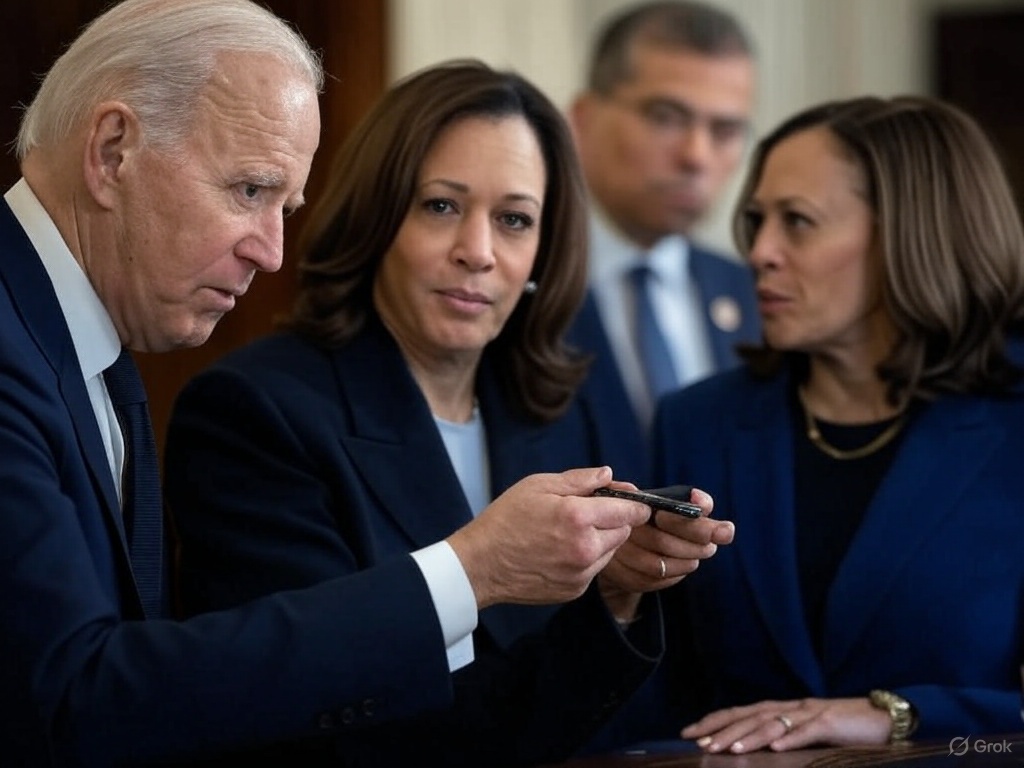NEWS
Breaking News: Biden Signs Executive Order on Abortion Access, Joined by Harris and Becerra….Read More

Biden Signs Executive Order on Abortion Access, Joined by Harris and Becerra
On July 8, 2022, President Joe Biden took a significant step in response to the Supreme Court’s decision to overturn Roe v.
Wade by signing an executive order aimed at protecting access to abortion services.
The signing ceremony took place in the Roosevelt Room of the White House, with Vice President Kamala Harris and Health and Human Services Secretary Xavier Becerra by his side, symbolizing a unified administration effort to address the fallout from the landmark ruling.
The executive order came just weeks after the Supreme Court’s June 24, 2022, decision in Dobbs v.
Jackson Women’s Health Organization, which eliminated the constitutional right to abortion and shifted regulatory power back to the states.
With millions of Americans facing new restrictions on reproductive healthcare, Biden’s action was framed as an initial response to safeguard access where federal authority allowed.
During the event, Biden handed a pen to Vice President Harris after signing the order—a ceremonial gesture underscoring her role as a vocal advocate for reproductive rights.
Harris, who has repeatedly condemned the Dobbs decision, stood alongside Health and Human Services Secretary Becerra, whose department would play a key role in implementing the order’s directives.
The executive order outlined two primary goals: protecting access to medication abortion and ensuring patient privacy and safety.
It directed the Department of Health and Human Services (HHS) to expand access to FDA-approved abortion pills, such as mifepristone, through federal programs where possible.
It also aimed to shield patients and providers from legal repercussions by strengthening privacy protections under federal law, including HIPAA.
Additionally, the order established a task force, co-chaired by Harris, to coordinate the administration’s response and mobilize federal resources.
Biden emphasized that the order was not a long-term solution, urging Congress to codify abortion rights into federal law—a prospect that remained uncertain given the political gridlock in Washington at the time.
“We need two additional pro-choice senators and a pro-choice House to make this a reality,” Biden remarked, signaling a call to action ahead of the 2022 midterm elections.
The event was steeped in symbolism. The Roosevelt Room, named after presidents Theodore and Franklin Roosevelt, served as a backdrop to highlight the administration’s commitment to progressive action in a time of crisis.
Harris, the first woman and woman of color to serve as vice president, represented a historic voice in the fight for reproductive justice, while Becerra’s presence underscored the practical steps HHS would take to implement the policy.
Critics, however, argued the order fell short of the bold action many activists demanded, such as declaring a public health emergency or using federal lands for abortion services in restrictive states.
Republicans and anti-abortion groups decried it as an overreach of executive power, setting the stage for legal challenges that would likely follow.
For Biden, Harris, and Becerra, the July 8 signing was a public pledge to defend abortion access amid a rapidly shifting legal landscape.
While the executive order marked a concrete step, it also highlighted the limits of presidential authority in a post-Roe America, leaving the broader battle to statehouses, courts, and the ballot box.












